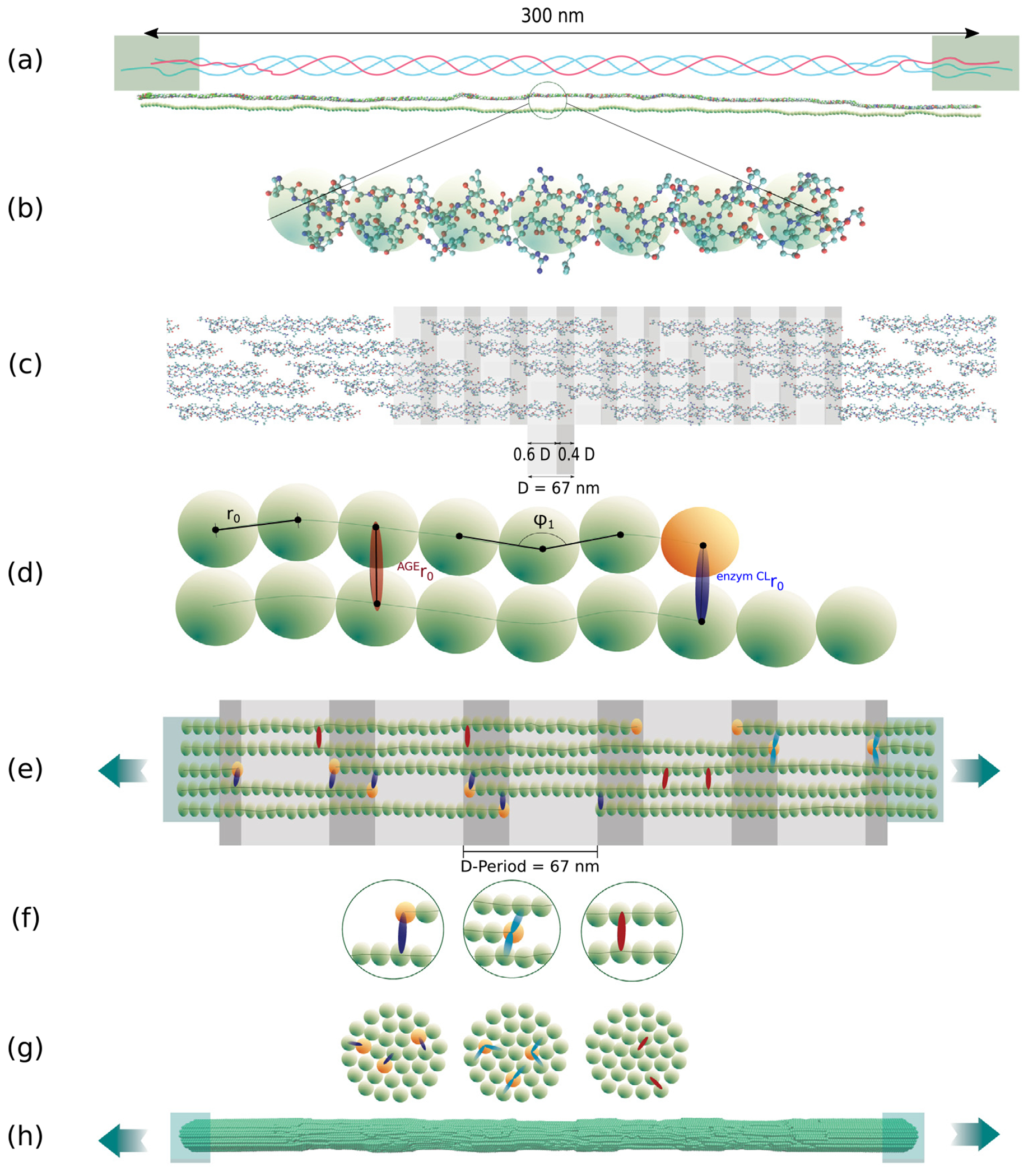Fig. 1.

Schematic overview of creation of the coarse-grained model of collagen fibrils. (a) TC molecule with telopeptide ends and helical main region: consists of 3 α-polypeptide helices twisted Into each other. (b) Full-scale atomistic TC molecule Is represented by a string of particles (coarse-grained model) — the forces between the particles represent the mechanical properties of the full-scale molecule. (c) Typical 5-staggering arrangement pattern of TC molecules within the collagen fibril with gap and overlap zones, leading the characteristic banding pattern. (d) The coarse-grained model parameters represent the mechanical properties of TC and the Inter-molecular cross-links (AGEs and enzymatic cross-links). (e) Schematic representation of the configuration of the model as a representative part of the collagen fibril with 5 gap and overlap zones. Particles at the ends are rigidly constrained for applying force during displacement-controlled tensile tests using steered molecular dynamics. (f) Different types of bonds Inserted In the model: Particles are linked via collagen covalent bonds within each TC molecule; ECLs as intermolecular covalent bonds (dark blue: divalent, light blue: trivalent) at the ends to the TC molecules, AGEs cross-links randomly placed between two TC molecules (red). (g) Cross sections with cross-links shown schematically. (h) Steered molecular dynamics tensile tests on collagen fibril model.
